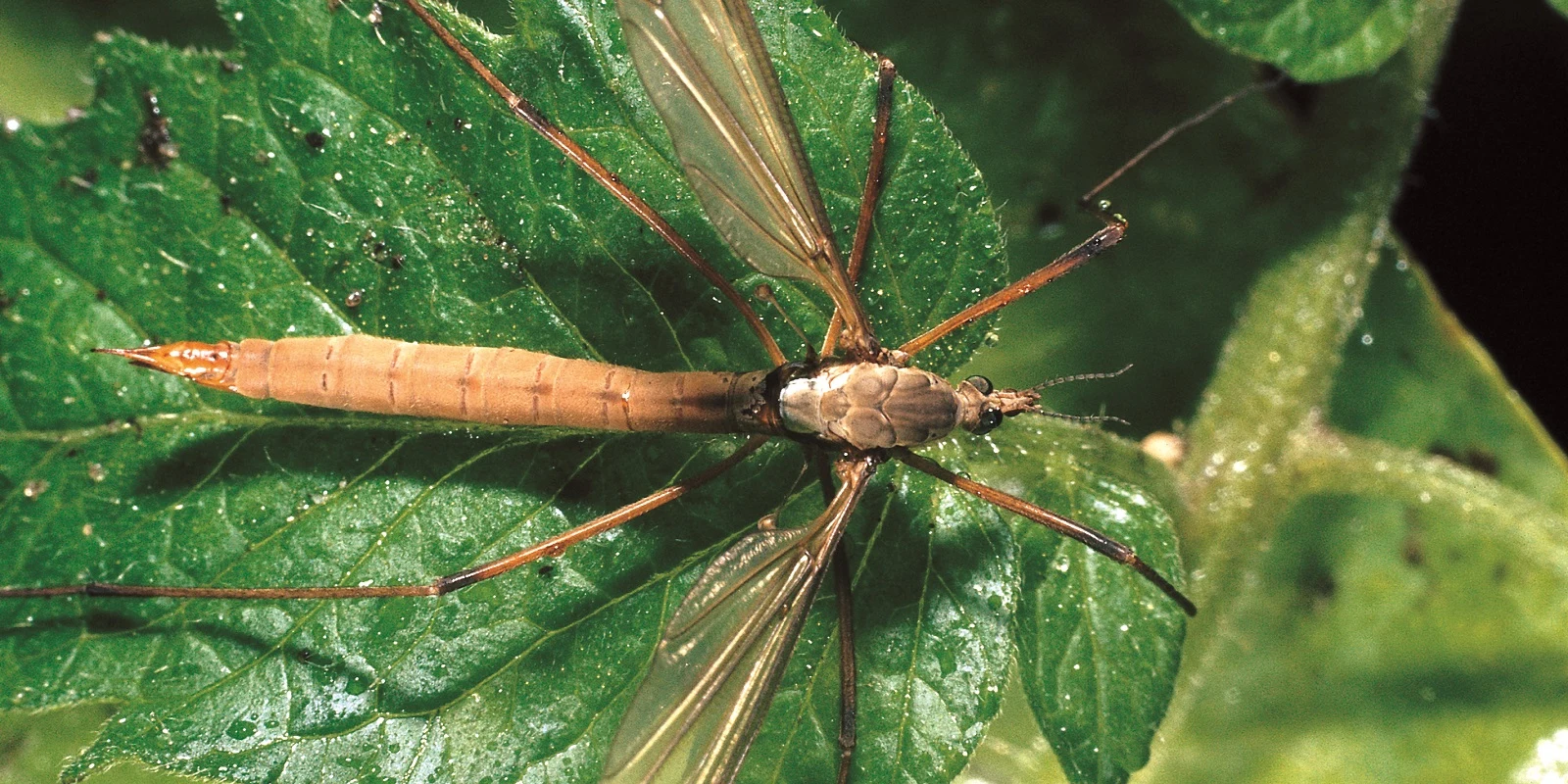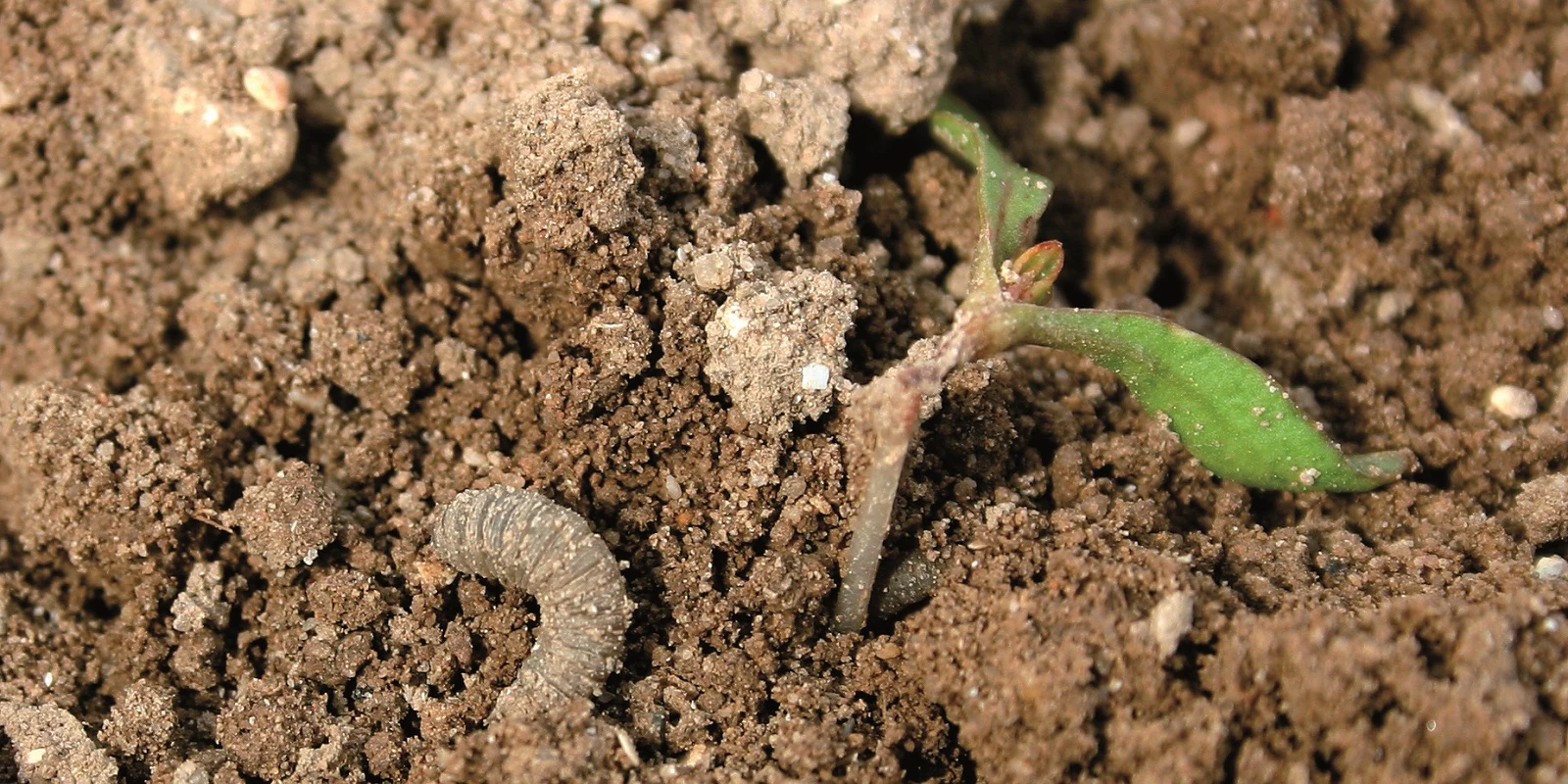
Leatherjackets
Tipula spp.
Identification
Leatherjackets are the larvae of crane flies which are very familiar to advisers and farmers. The adults, known to many as ‘Daddy long-legs’, are weak fliers with long gangly legs and a long slender abdomen. Whilst the adults do not affect crops, leatherjackets are important pests. Leatherjackets are greyish/brown and up to 40 mm long. They do not have legs or an apparent head and they have a tough ‘leathery’ outer skin. Leatherjackets can be readily found in the vicinity of recently damaged plants.
Symptoms
Whilst cereal seed can be hollowed, greater damage is caused by the leatherjackets moving along the rows of plants and feeding on the stems at or below ground level. The first symptoms appear as yellow, wilted plants which can lead to individual plant loss as well as loss of crop in patches.
Life-cycle
Eggs are laid in grassland areas and after about 10 days the leatherjackets emerge and start feeding on plant roots. During mild winters feeding can continue through until spring when activity is at its peak and when fully mature the leatherjackets pupate in mid to late summer. The pupae have the ability to ‘wriggle’ to the top of the soil to allow the adult flies to emerge in late summer. Pupal cases can occasionally be seen protruding from the soil surface. There is usually only 1 generation per year.
Importance
Leatherjackets are a widespread and important pest of a wide range of crops including cereals, grass and root and vegetable crops. Where populations are high whole crops can be completely lost.
Threshold
The greatest risk is for spring cereal crops after grass. ADAS thresholds for spring cereals are 50 leatherjackets/m2, or 5 leatherjackets/m row.

Leatherjacket

Adult 'daddy long-legs' crane fly.

Leatherjacket and damaged plant ©Blackthorn Arable Ltd.


